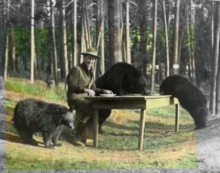
The National Park Service (NPS) is an agency of the United States federal government, within the U.S. Department of the Interior. The service manages all national parks; most national monuments; and other natural, historical, and recreational properties, with various title designations. The United States Congress created the agency on August 25, 1916, through the National Park Service Organic Act. Its headquarters are in Washington, D.C., within the main headquarters of the Department of the Interior.

Everglades National Park is an American national park that protects the southern twenty percent of the original Everglades in Florida. The park is the largest tropical wilderness in the United States and the largest wilderness of any kind east of the Mississippi River. An average of one million people visit the park each year. Everglades is the third-largest national park in the contiguous United States after Death Valley and Yellowstone. UNESCO declared the Everglades & Dry Tortugas Biosphere Reserve in 1976 and listed the park as a World Heritage Site in 1979, and the Ramsar Convention included the park on its list of Wetlands of International Importance in 1987. Everglades is one of only three locations in the world to appear on all three lists.

Wilderness or wildlands are natural environments on Earth that have not been significantly modified by human activity, or any nonurbanized land not under extensive agricultural cultivation. The term has traditionally referred to terrestrial environments, though growing attention is being placed on marine wilderness. Recent maps of wilderness suggest it covers roughly one-quarter of Earth's terrestrial surface, but is being rapidly degraded by human activity. Even less wilderness remains in the ocean, with only 13.2% free from intense human activity.

Sleeping Bear Dunes National Lakeshore is a U.S. national lakeshore in the northwestern Lower Peninsula of Michigan. Located within Benzie and Leelanau counties, the park extends along a 35-mile (56 km) stretch of Lake Michigan's eastern coastline, as well as North and South Manitou islands, preserving a total of 71,199 acres. The park is known for its outstanding natural features, including dune formations, forests, beaches, and ancient glacial phenomena. The lakeshore also contains many cultural features, including the 1871 South Manitou Island Lighthouse, three former stations of the Coast Guard, and an extensive rural historic farm district.
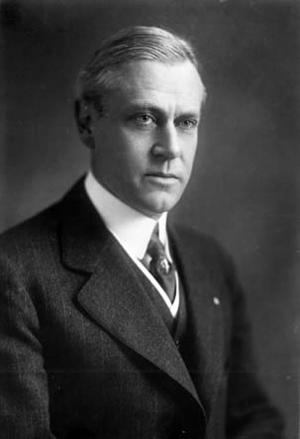
Stephen Tyng Mather was an American industrialist and conservationist who was the first director of the National Park Service. As president and owner of Thorkildsen-Mather Borax Company he became a millionaire. With his friend the journalist Robert Sterling Yard, Mather led a publicity campaign to promote the creation of a unified federal agency to oversee National Parks administration, which was established in 1916. In 1917, Mather was appointed to lead the NPS, the new agency created within the Department of the Interior. He served until 1929, during which time Mather created a professional civil service organization, increased the numbers of parks and national monuments, and established systematic criteria for adding new properties to the federal system.

A national recreation area (NRA) is a protected area in the United States established by an Act of Congress to preserve enhanced recreational opportunities in places with significant natural and scenic resources. There are 40 NRAs, which emphasize a variety of activities for visitors, including hiking, camping, boating, fishing, swimming, biking, horseback riding, and wildlife viewing, in areas that include multiple-use management for both conservation and limited utilization of natural resources. They have diverse features and contexts, being established around reservoirs, in urban areas, and within forests. Due to their size, diversity of activities, and proximity to population centers, NRAs are among the most visited units of the National Park System, with six among the thirty most visited sites.
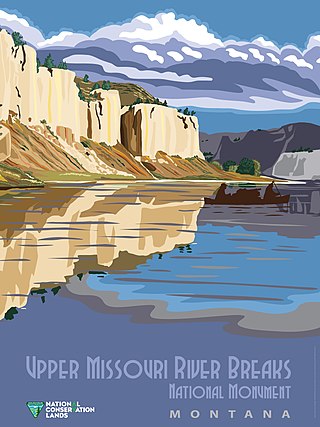
National Conservation Lands, formally known as the National Landscape Conservation System, is a 35-million-acre (140,000 km2) collection of lands in 873 federally recognized areas considered to be the crown jewels of the American West. These lands represent 10% of the 258 million acres (1,040,000 km2) managed by the Bureau of Land Management (BLM). The BLM is the largest federal public land manager and is responsible for over 40% of all the federal public land in the nation. The other major federal public land managers include the US Forest Service (USFS), National Park Service (NPS), and the US Fish and Wildlife Service (USFWS).

The Wilderness Society is an American non-profit land conservation organization that is dedicated to protecting natural areas and federal public lands in the United States. They advocate for the designation of federal wilderness areas and other protective designations, such as for national monuments. They support balanced uses of public lands, and advocate for federal politicians to enact various land conservation and balanced land use proposals. The Wilderness Society also engages in a number of ancillary activities, including education and outreach, and hosts one of the most valuable collections of Ansel Adams photographs at their headquarters in Washington, D.C.

Thomas Chalmers Vint was a landscape architect credited for directing and shaping landscape planning and development during the early years of the United States National Park System. His work at Yosemite National Park and the development of the Mission 66 program are among his better known projects, although his influence can be seen in parks across America. Vint's true talents lay in his design elements. These can best be described as rustic, relating to how he was able to harmonize structures with their natural surroundings. Vint was awarded the Distinguished Service Award, the highest honor conferred for meritorious service to the U.S. government. He was made a Fellow of the American Society of Landscape Architects and American Institute of Architects.

Robert Marshall was an American forester, writer and wilderness activist who is best remembered as the person who spearheaded the 1935 founding of the Wilderness Society in the United States. Marshall developed a love for the outdoors as a young child. He was an avid hiker and climber who visited the Adirondack Mountains frequently during his youth, ultimately becoming one of the first Adirondack Forty-Sixers. He also traveled to the Brooks Range of the far northern Alaskan wilderness. He wrote numerous articles and books about his travels, including the bestselling 1933 book Arctic Village.

The National Parks Conservation Association (NPCA) is the only independent, nonpartisan membership organization devoted exclusively to advocacy on behalf of the National Parks System. Its mission is "to protect and enhance America's National Park System for present and future generations."

Horace Marden Albright was an American conservationist and the second director of the National Park Service.
Harvey Benjamin Broome was an American lawyer, writer and conservationist. A native of Knoxville, Tennessee, Broome was a founding member of The Wilderness Society, for which he served as president from 1957 until his death in 1968, and played a key role in the establishment of the Great Smoky Mountains National Park. The Knoxville Group of the Tennessee Chapter of the Sierra Club is named the "Harvey Broome Group" in his honor.
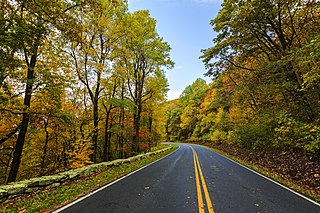
Shenandoah National Park is a national park in the Eastern United States that encompasses part of the Blue Ridge Mountains in the Commonwealth of Virginia. The park is long and narrow, with the Shenandoah River and its broad valley to the west, and the rolling hills of the Virginia Piedmont to the east. Skyline Drive is the main park road, generally traversing along the ridgeline of the mountains. Almost 40% of the park's land—79,579 acres —has been designated as wilderness areas and is protected as part of the National Wilderness Preservation System. The highest peak is Hawksbill Mountain at 4,051 feet (1,235 m).
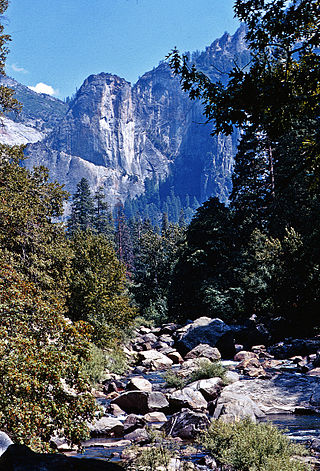
Conservation in the United States can be traced back to the 19th century with the formation of the first National Park. Conservation generally refers to the act of consciously and efficiently using land and/or its natural resources. This can be in the form of setting aside tracts of land for protection from hunting or urban development, or it can take the form of using less resources such as metal, water, or coal. Usually, this process of conservation occurs through or after legislation on local or national levels is passed.
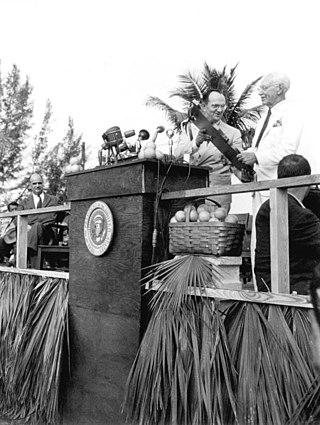
Ernest Francis Coe, also "Tom Coe" was an American landscape designer who envisioned a national park dedicated to the preservation of the Everglades, culminating in the establishment of Everglades National Park. Coe was born and spent most of his life in Connecticut as a professional gardener, moving to Miami at age 60. He was enormously impressed with the Everglades and became one of several South Florida-based naturalists who grew concerned for the wanton destruction of plants, animals, and natural water flow in the name of progress and prosperity. Coe worked for more than 20 years to get Everglades National Park established, but he viewed the effort as mostly a failure. However, Oscar L. Chapman, former Secretary of the Interior, stated "Ernest Coe's many years of effective and unselfish efforts to save the Everglades earned him a place among the immortals of the National Park movement."

Tehipite Valley, a glacial valley of the Middle Fork Kings River, is located in Kings Canyon National Park in the Sierra Nevada of California. The valley is in Fresno County about 45 miles (72 km) southwest of Bishop and 60 miles (97 km) east of Fresno and is known for its Yosemite-like scenery and its extreme isolation.

The Caloola Club was a bushwalking and outdoors activity club that was based in Sydney, New South Wales, Australia, founded in 1945 and active until 1963, when it merged with the National Parks Association of N.S.W. The club was an influential part of the 'second wave' of the conservation and environmental movement in New South Wales during the post-WWII period.


